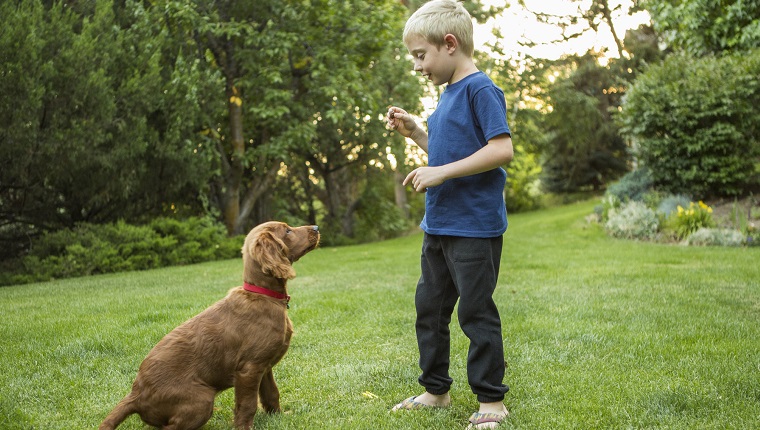Dog training can come in different forms, but science has continually backed up one particular method: positive rewards-based training.
Rewards-based training methods have been proven to work, according to research from the British Columbia Society for the Prevention of Cruelty to Animals (BC SPCA). Trainers and dog owners can expect bigger chances of more obedient, less aggressive, and fewer fear-linked behaviors in dogs. This is a better response compared to aversive training, which leads more to undesirable behaviors.
You can find out a bit more about the BC SPCA findings in the webinar below.
“Trainers can also help dog owners determine the cause of undesirable behaviors,” said Dr. Karen van Haaften in an interview with Psychology Today. “This can be addressed by removing the reinforcer for the undesirable behavior and making an alternative behavior consistently more rewarding.”
Rewards-based training benefits dog owners because the techniques are based on psychological concepts like conditioning theories. Over time, the humane approach breeds a more loving and close relationship between pet owner and dog.
Pick The Right Rewards For Wanted Behaviors
One reason some dog owners might have trouble with this training method is that rewards are distinct to each dog. In other words, one act can be a reward to one dog and a punishment to another.
As a pet owner, you need to be aware of what your dog likes and what they are averse to.
When you keep doing what your pet feels is punishment every time they perform an action, they’re likely to avoid repeating it. This can complicate your communication with your dog, especially when the action appears to be straightforward.
For example, petting seems like a reward, but there are cases when a dog could see it a punishment, depending on the dog’s history or preference.
You need to remember the theory of behaviorism and operational conditioning. When you pair an action with a rewarding stimulus, you’ll help condition your pet’s response. They’ll likely do that action again to get the reward.
At the same time, if an act is paired with an aversive stimulus, they may stop the action so you stop “punishing” them.
Here, it’s important to know what your dog feels is a reward. That way, you can keep rewarding the desired behavior again.
But what do we do about unwanted behaviors–the ones we want our dogs to stop? Like with wanted behaviors, the answer is also trusting in positive-training.
Positive-Training Rewards Good, Stops Bad Humanely
It may seem like positive training is all about rewarding the good behaviors, but what about the bad ones? In reality, rewards-based training can help weed out bad behavior, too.
You’re not encouraging bad behavior by ignoring it. When you don’t offer your dog a reward for an unwanted behavior–even if that reward is your attention–your dog will tend to stop that behavior in favor of the acts that earn them rewards.
Good behavior gets a reward. Bad behavior gets ignored.
Like rewards, punishments can be individual for each dog. Yelling, for example, might be a punishment for some dogs, while others see it as a chance to get attention and communication from their humans. They may see the punishment as a reward.
You don’t want to accidentally reward bad behavior, so it’s often best to ignore it. Essentially, through rewards-based training, you’re making the wanted behaviors more rewarding for your dog than the unwanted ones.
Rewards-based training is the most humane method that’s also effective in improving good behavior. It’s also a way to cultivate a good relationship and closeness with your dog in a more loving and gentle manner.
What do you think of rewards-based training? Is it something you’ll try with your dog? Let us know in the comments below!
Related Articles:









